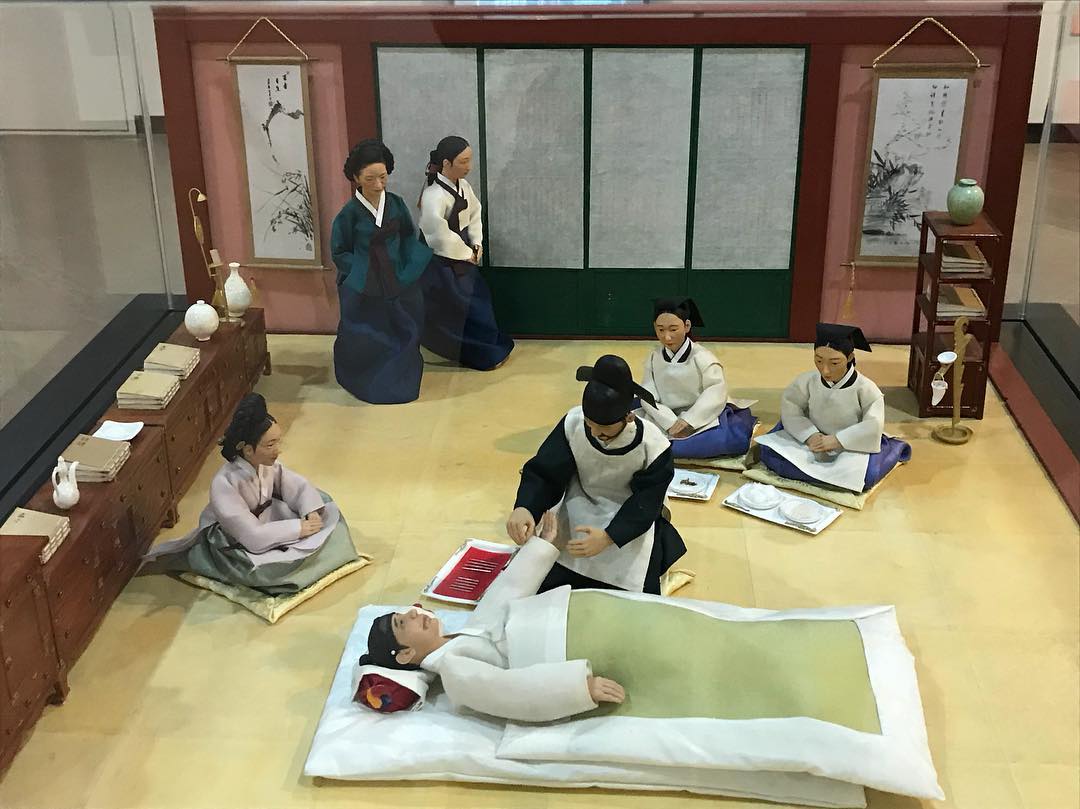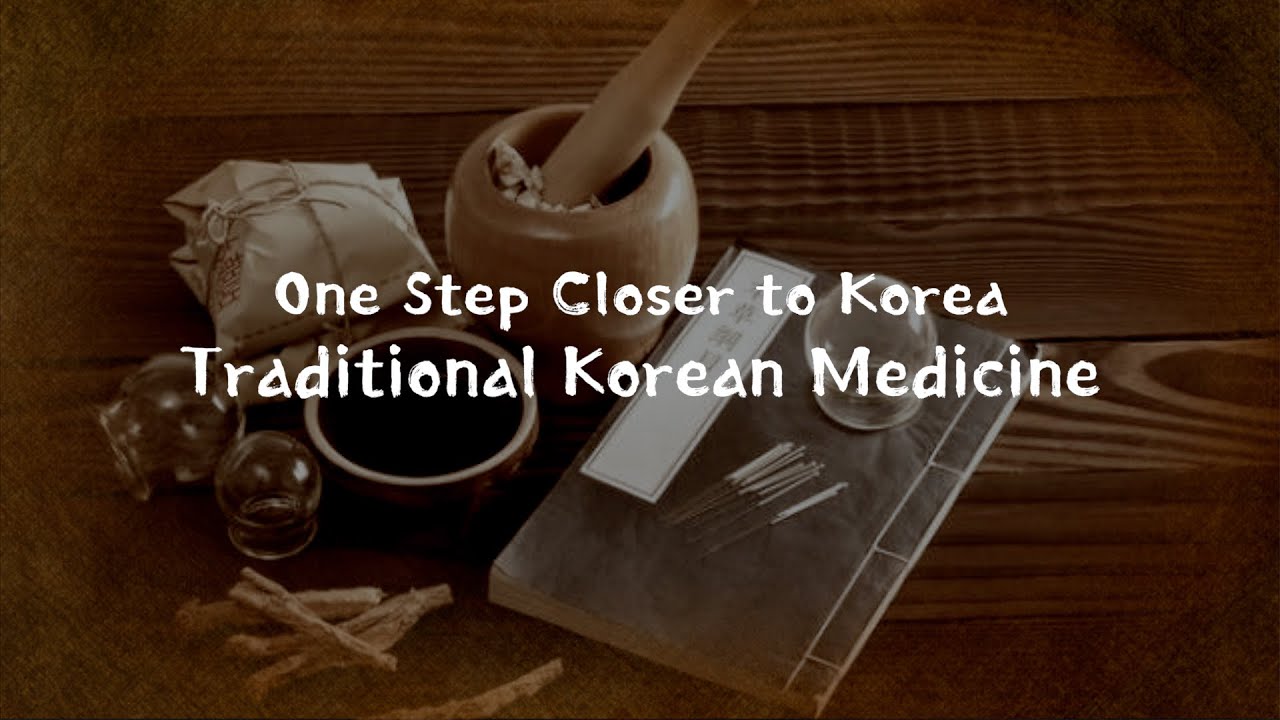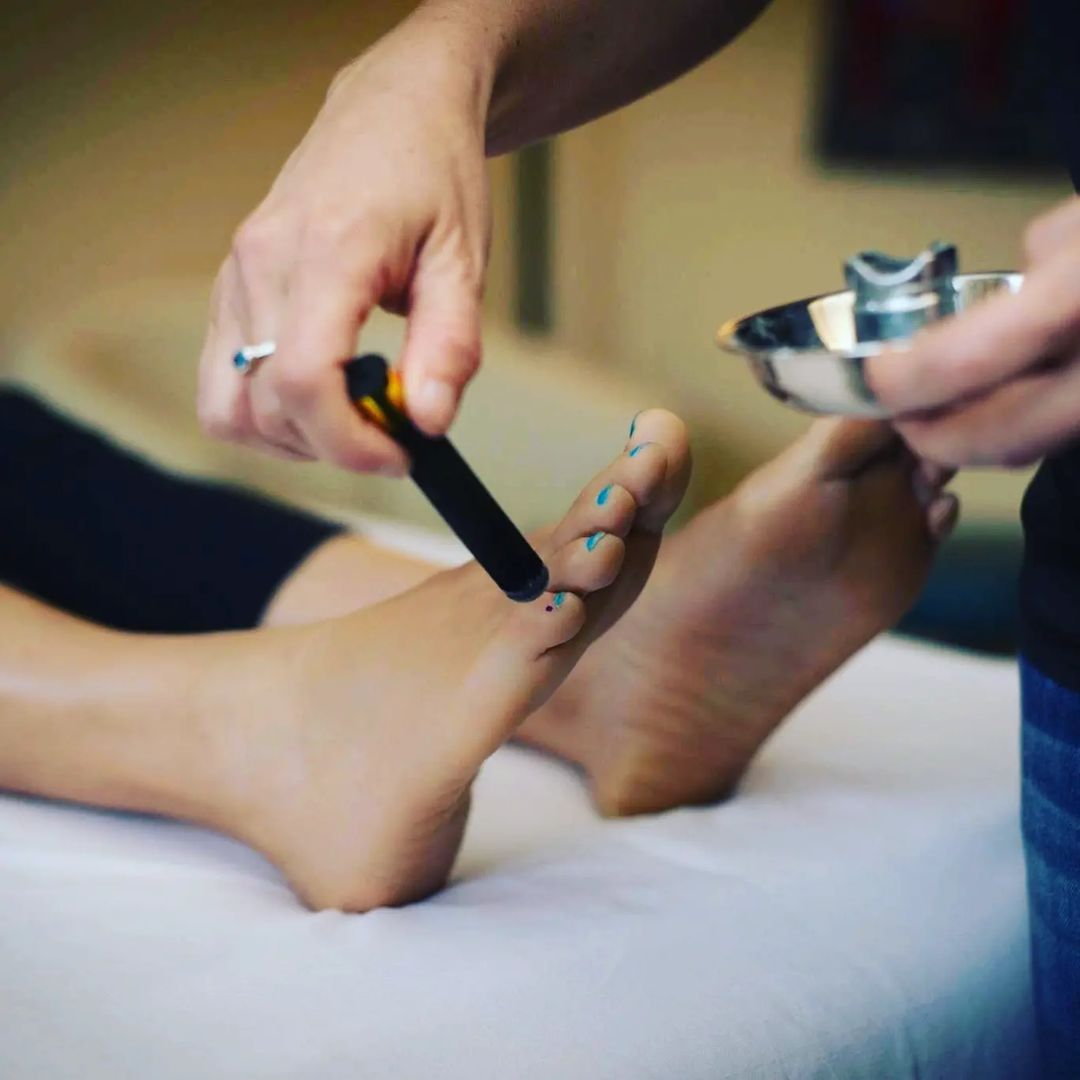Hanyak - Traditional Korean Medicine Thrives In Modern Times
People and nations consistently make way for progress, but it doesn’t necessarily mean abandoning traditional ways. For Koreans, hanyak, their traditional Korean medicine, will always have a special place in modern society.
Author:Suleman ShahReviewer:Han JuAug 03, 202290 Shares1.2K Views

As ancient temples stand mightily proud together with gleaming skyscrapers in Seoul, hanyakremains relevant as Korea’s modern medical system flourish.
For Ultimate Fighting Championship (UFC) fans, never confuse “hanyak”with “The Hanyak.”
The latter is the moniker of American kickboxer and mixed martial artist (MMA) Dustin Jacoby.
Jacoby’s grandmother would call him and his twin brother, Darren, as “little hanyaks” when they’re kids, according to Sportskeeda.
The 34-year-old MMA fighter explained that “hanyak”refers to a particular Polish soldier, the type who is aggressive and inappropriate in behavior.
For the Koreans, however, the word “hanyak”elicits positive feelings as it pertains to their traditional way of treatment.

(One Step Closer to Korea) Traditional Korean Medicine
Traditional Korean Medicine
In the 1930s under the Japanese occupation, Korea experienced what one scholastic paper described as “the Eastern medicine renaissance.”
The said paper, published by the journal Social Historyof Medicine in 2020, stated that Korean physicians from that era proved that Eastern medicine could go head-to-head with Western medicine.
Generally speaking, Western medicine involves conventional ways of treatment.
Eastern medicine uses traditional ways and more often together with Western medicine.
According to a 1989 paper published by the journal Social Science& Medicine, the Korean term “hanbang”refers to the “traditional Korean medical care system.”
A 2022 article from Medical NewsToday explains that while hanbangembodies traditional Korean medicine in a broader scope, hanyakstems from it.
“„It is the sum total of the knowledge, skill, and practices based on the theories, beliefs, and experiences indigenous to different cultures, whether explicable or not, used in the maintenance of health as well as in the prevention, diagnosis, improvement or treatment of physical and mental illness.
A shorter way of saying it:
Traditional medicine refers to the ancient ways of treating sickness in the body despite the absence of scientific backing or proof.
Based on its “Traditional Medicine Strategy 2014-2023,” the WHO acknowledges the importance of traditional medicine, recommends it, and even encourages governments to support it.
In fact, WHO launched the “Traditional Medicine Program” way back in 1977.
As for Eastern medicine in Korea, it’s a tale as old as time.
The Koreans have been practicing hanyakfor over 2,000 years, according to the paper “Historical Medical Value of Donguibogam” (2016), published in the Journal of Pharmacopuncture.
In 1613, the book “Donguibogam” (“Principles and Practice of Eastern Medicine” or “Treasured Paragon of Eastern Medicine”) came out.
Heo Jun, a 17th-century court physician from the Joseon Dynasty (1392–1910), compiled it.
The 25-volume “Donguibogam” has since been regarded as “the ‘bible’ of Oriental medicine.”
South Korea is one of the countries with a national policy on traditional and complementary medicine (T&CM), based on a 2019 WHO global report on T&CM.
“Complementary medicine” is just another term for “alternative medicine.”
In January 2016, Korea’s Ministry of Health and Welfare announced its “comprehensive plan” to develop traditional Korean medicine, reported Arirang International Broadcasting.
Included in the said plan was the move to create “standardized clinical practice guidelines” for traditional medicine clinics practicing hanyak.
The guidelines would be for “30 diseases including . . . cancer, infertility, obesity.”

Introducing KIOM(Korea Institute of Oriental Medicine)
The Korea Institute of Oriental Medicine (KIOM; est. 1994) already developed similar guidelines intended for five diseases.
All in all, according to the Arirang report, Korea aims for the “development and globalization” of hanyak.
In fact, KIOM published the “Donguibogam” and other reading materials related to traditional Korean medicine in English, Russian, and Spanish.
HanyakIn Different Forms
Though hanbangis the umbrella term for traditional Korean medicine, some sources would identify hanyakas either the traditional Korean medicine itself or a part of it.
Below are some forms of hanyak:
1. Buwang(cupping)
Research studies reveal that different countries, both in the East and in the West, have been practicing cupping therapysince time immemorial.
It’s mentioned in “Ebers Papyrus” (around 1550 B.C.), an Egyptian record of traditional medicine, according to one paper published in the Journal of Traditional and Complementary Medicinein 2015.
The said paper states:
“„Cupping is a simple application of quick, vigorous, rhythmical strokes to stimulate muscles.
As its name suggests, cups (round or bell-shaped; glass, silicone, or wooden) are placed upside down on a person’s back.
A hanyakpractitioner will burn something (e.g., herbs) inside the cup. A cup gets immediately placed as soon as the fire is gone.
Per WebMD, the cups will be left on the skin for three minutes.
Cupping relieves neck pain, backache, and shoulder pain.
Three papers (published in 2012, 2018, and 2021) discussed how cupping therapy can treat facial paralysis (e.g., Bell's palsy).
Based on a study published in the Journal of Acupuncture Research, the material the cup is made of and its size affect the pressure that will be created during the cupping.
2. Ch’im(also known as Sa-am; acupuncture)
For the Center for Integrative Medicine of the UC San Diego School of Medicine in California:
“„Acupuncture is a 3,000-year-old healing technique of Traditional Chinese Medicine.
In acupuncture, very thin needles are inserted at certain points – the so-called acupuncture points/acupoints – of the body to stimulate them for healing.
According to UC San Diego, it was in 1997 when the U.S. National Institutes of Health (NIH) publicly acknowledged acupuncture as safe and effective.
Acupuncture can relieve pain more effectively than morphine (a popular pain medicine).
That’s based on a paper that conducted an acupuncture-versus-morphine trial and was published in the American Journal of Emergency Medicinein 2016.
In addition, while 85 patients who were given morphine experienced “minor adverse effects,” only four patients who received acupuncture did.
China, Japan, and Korea are the countries known for acupuncture.
In hanyak, what makes Korean acupuncture distinct is that it only involves four needles. This method or technique is known as the Sa-am(also spelled as “Sa-Ahm”) technique, aka the four-needle technique.
A Korean monk named Sa-Ahm (or Sa-am Do-in), who lived during the Joseon Dynasty, founded it.
A paper published in the Open Journal of Immunologyin 2015 implied that night work could cause an “imbalance” in the performances of the parasympathetic nervous system and the sympathetic nervous system.
Such imbalance could badly affect, among other things, a person’s blood pressure, digestion, and heart rate.
Per SleepFoundation.org, night work is work done from 11:00 p.m. through 3:00 a.m.
In the said paper, Sa-amacupuncture was able to prevent an imbalance in those nurses working on the night shift who received it.
Man's best friend could also benefit from hanyak.
Acupuncture can treat a certain kind of tumor that grows among dogs.
Based on a case report published in the Journal of Acupuncture and Meridian Studiesin 2017, acupuncture was used to treat oral fibrosarcoma (oFSA), a kind of cancerous tumor in dogs.
The result: acupuncture “necrotized (meaning, killed) remarkably” the tumor cells.
Another form of hanyakis the Korean Hand Acupuncture Therapy (KHT), which started in 1971.
According to one study published in Hanyang Medical Reviewsin 2010, KHT aims to prevent a kind of imbalance that can affect the blood flow in the brain.
KHT has no side effects.
The papers mentioned here are merely some of the numerous studies undertaken to test the efficacy of Korean acupuncture.
From 1983 to 2001 alone, 124 studies took place.
That’s according to a paper published in Evidence-Based Complementary and Alternative Medicinein 2005.
Those studies attested that hanyak– acupuncture and moxibustion in particular – can improve the condition pertaining to several kinds of ailments.
3. Chunatherapy
This one is recommended for musculoskeletal disorders (MSDs).
MSDs affect (for one, they cause pain to) bones, joints, and muscles.
According to a paper published in the journal Integrative Medicine Researchin 2014, in Korea, Chunawas first practiced in 1445.
In 1996, South Korea offered a formal training course in Chuna for the first time.
Together with traditional practices, today’s Chunatherapy employs knowledge in the following:
- anatomy
- physiology
- pathology
The paper stated that Chunaalso incorporates a combination of these forms of alternative medicines from different countries:
- chiropractic and osteopathy (USA)
- manipulative techniques (Japan)
- Tui na(China; similar to Japan’s shiatsu)
Dr. Kim Ha-neul of the Jaseng Hospital of Korean Medicine in Daejeon, South Korea, told Arirang:
“„Chunatherapy is not just about fixing the bones. It boosts natural healing by restoring balance in the body.
According to Arirang, the American Optometric Association (AOA; est. 1897) includes Chunatherapy in its curriculum.
4. D’um(moxibustion)
It is believed that people have been doing moxibustion since 500 B.C., according to Cleveland Clinic.
This form of hanyakinvolves the use of mugwort (Artemisia vulgaris), a kind of flowering plant.
The mugwort leaves will be dried and rolled to take the shape of cones or sticks. These cones or sticks (they appear like an incense) are called moxa.
Moxibustion starts with the lighting or burning of the moxa.
The lighted/burning end of the moxa will be held close to the skin so that its heat will stimulate acupressure points/acupoints in the body.
Dr. Thuy Kim Nguyen, DAOM (Doctor of Acupuncture and Oriental Medicine), LAc (Licensed Acupuncturist), told Cleveland Clinic:
“„Performing moxibustion with acupuncture can increase its effectiveness.
Moxibustion is not for people:
- allergic to mugwort
- with asthma(or other respiratory problems/conditions)
- sensitive to smoke
A research study published in Evidence-Based Complementary and Alternative Medicinein 2014 identified getting burned as one of the risks involved in moxibustion.
The general rule when it comes to hanyakis to get it from licensed and well-experienced practitioners only.
Hope For Hanyak
In the early years of the new millennium, interest in hanyakfrom abroad was already seen.
For one, in April 2004, Johns Hopkins University in Maryland made an agreement for research collaboration with Kyung Hee University in Seoul, reported Arirang.
The College of Korean Medicine of Kyung Hee University is regarded as South Korea’s top school for traditional Korean medicine.
Johns Hopkins University desired to establish a hanyakclinic.
Dr. Adrian Sandra Dobs, an endocrinologist and professor at the said school, said that Western medicine couldn’t treat several diseases. They would want to know if traditional Korean medicine could do so.
The key in making these traditional methods to work wonders is integration.
In a 2011 interview with Voice of America, Dr. Raimund Royer, an Austrian physician at the Jaseng Hospital of Korean Medicine, said that they combine hanyakwith modern medical treatment.
Dr. Royer, a board member at the Association of Korean Oriental Medicine (AKOM) said:
“„I think . . . it’s a very good and . . . future-pointing kind of approach to combine, to integrate both the Western diagnostic system and the traditional treatment system.
Additionally, as Dr. Kim Ha-neul said to Arirang, one great thing about hanyakis that it’s “free from side effects.”
This integration of Western medicine with traditional Korean medicine, plus the assurance of no side effects make hanyakappealing to anyone seeking relief or cure from their illnesses.

Suleman Shah
Author
Suleman Shah is a researcher and freelance writer. As a researcher, he has worked with MNS University of Agriculture, Multan (Pakistan) and Texas A & M University (USA). He regularly writes science articles and blogs for science news website immersse.com and open access publishers OA Publishing London and Scientific Times. He loves to keep himself updated on scientific developments and convert these developments into everyday language to update the readers about the developments in the scientific era. His primary research focus is Plant sciences, and he contributed to this field by publishing his research in scientific journals and presenting his work at many Conferences.
Shah graduated from the University of Agriculture Faisalabad (Pakistan) and started his professional carrier with Jaffer Agro Services and later with the Agriculture Department of the Government of Pakistan. His research interest compelled and attracted him to proceed with his carrier in Plant sciences research. So, he started his Ph.D. in Soil Science at MNS University of Agriculture Multan (Pakistan). Later, he started working as a visiting scholar with Texas A&M University (USA).
Shah’s experience with big Open Excess publishers like Springers, Frontiers, MDPI, etc., testified to his belief in Open Access as a barrier-removing mechanism between researchers and the readers of their research. Shah believes that Open Access is revolutionizing the publication process and benefitting research in all fields.

Han Ju
Reviewer
Hello! I'm Han Ju, the heart behind World Wide Journals. My life is a unique tapestry woven from the threads of news, spirituality, and science, enriched by melodies from my guitar. Raised amidst tales of the ancient and the arcane, I developed a keen eye for the stories that truly matter. Through my work, I seek to bridge the seen with the unseen, marrying the rigor of science with the depth of spirituality.
Each article at World Wide Journals is a piece of this ongoing quest, blending analysis with personal reflection. Whether exploring quantum frontiers or strumming chords under the stars, my aim is to inspire and provoke thought, inviting you into a world where every discovery is a note in the grand symphony of existence.
Welcome aboard this journey of insight and exploration, where curiosity leads and music guides.
Latest Articles
Popular Articles



